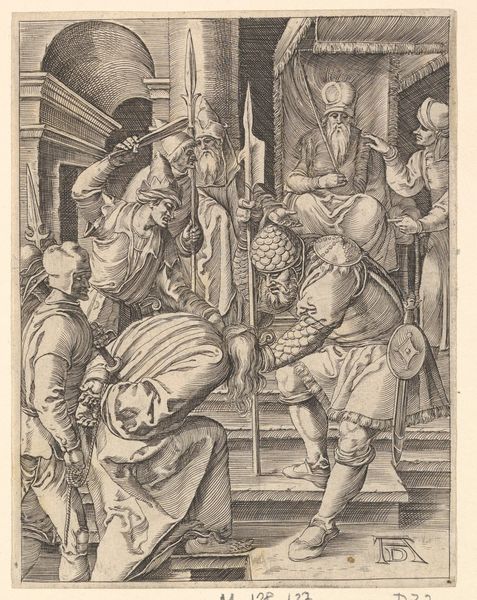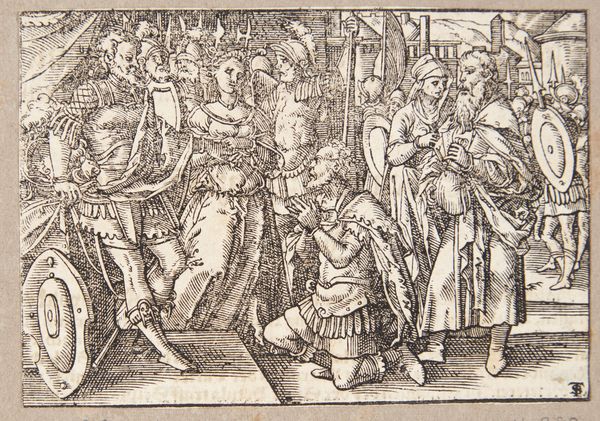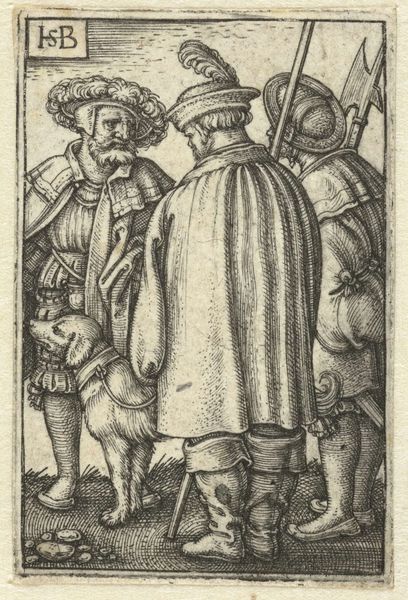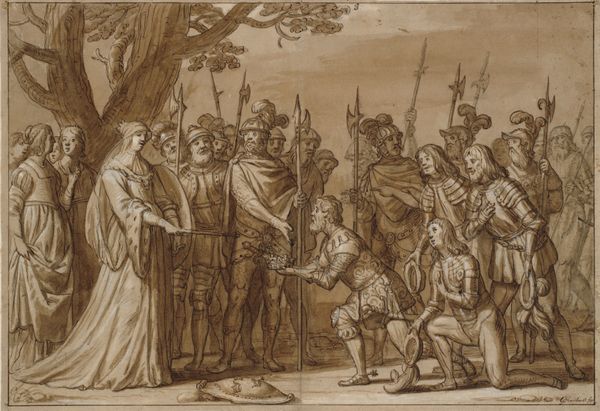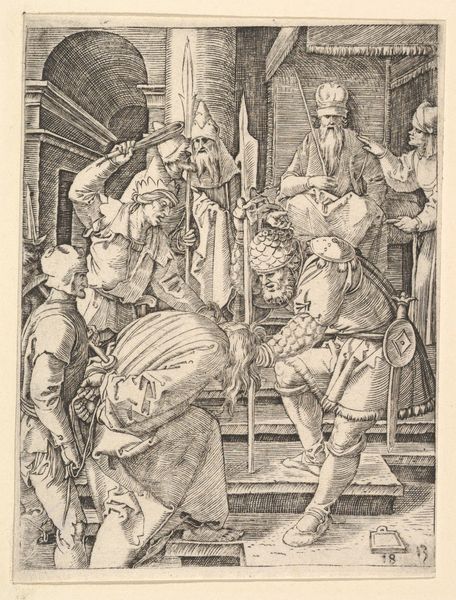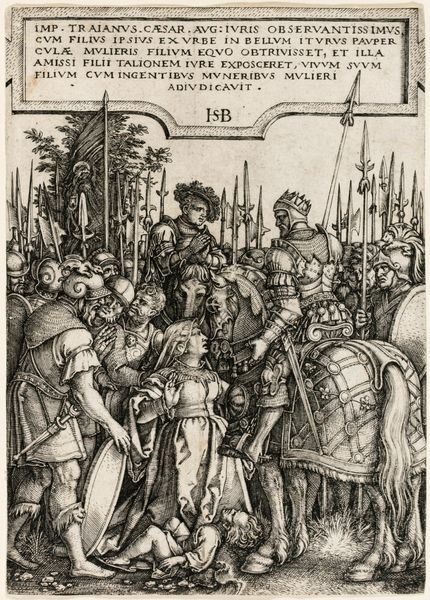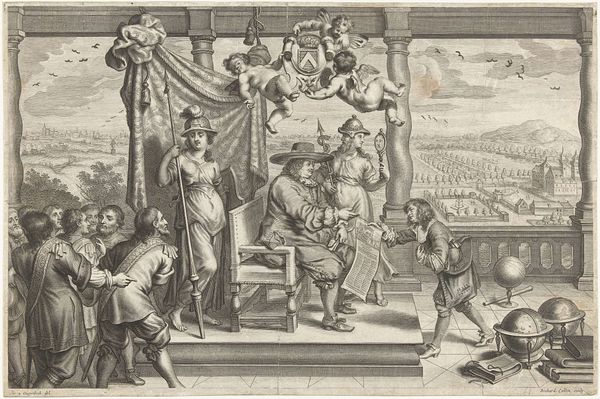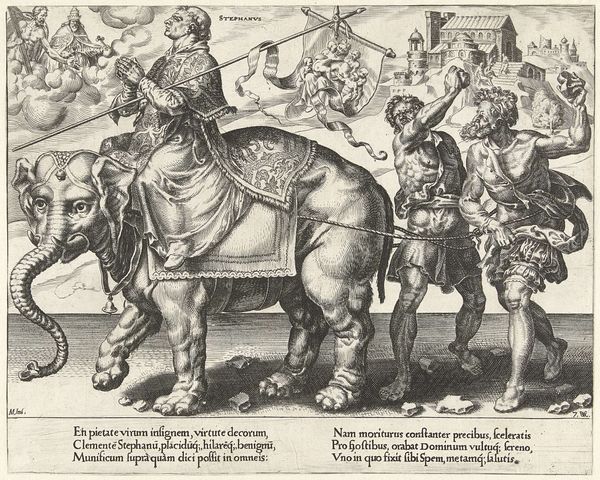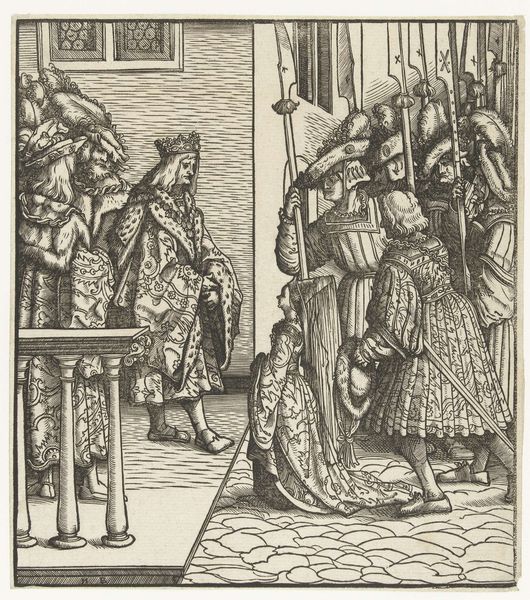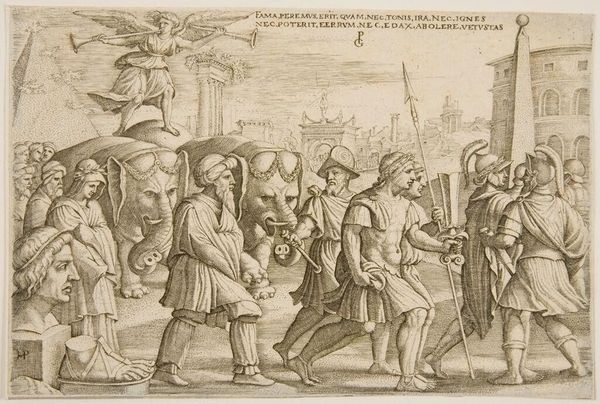
Roman soldiers and Jewish judges (left wing from the Triptych of the Crucifixion) 1481
0:00
0:00
painting, oil-paint
#
portrait
#
narrative-art
#
painting
#
oil-paint
#
soldier
#
group-portraits
#
christianity
#
history-painting
#
early-renaissance
#
mixed media
#
christ
Copyright: Public domain
Curator: Looking at Gerard David's "Roman Soldiers and Jewish Judges," a panel from the Triptych of the Crucifixion, painted around 1481, I am struck by how… muted the emotional register feels, despite the drama of the scene. Editor: Muted is an interesting choice. I see it, though. Almost dreamlike, isn't it? A procession of figures, and something about the almost doll-like quality of their faces… It lacks the intensity you might expect. Curator: Precisely. Notice how David employs this almost photographic clarity with the characters’ expressions. There’s this detachment, almost as if they're aware they're part of a tableau. Each figure is painstakingly rendered, with every fold of fabric, every glint of metal armor, accounted for. Editor: You know, the rendering is impeccable, but I’m really taken with the colours, too. Those pale, chalky blues and reds—it creates a very distinct atmosphere. Early Renaissance palette, yes, but it's the distribution; they serve to draw your eye carefully around the scene. Deliberately, wouldn't you agree? Curator: Without a doubt. And consider the composition: it is classically balanced. On the left, the soldiers, firm and imposing. And to the right are Jewish figures, all presented against this sort of hazy, nondescript landscape. Editor: Landscape? Well…I hesitate to call it that! It's more a backdrop than a space you could imagine occupying, which plays into that overall dreaminess we spoke of earlier. Curator: That's a point well taken, indeed. But it all works together. It suggests something profound, that the events depicted are archetypal, taking place outside normal time and space. But if you consider the perspective here, don't you get the idea that its effect could make people who saw it at the time just a bit uneasy? Editor: Uneasy in the way that… it leaves much to the imagination? Absolutely. Instead of dictating an emotional response, David opens a space for personal reflection. We have to meet it halfway. Curator: Precisely. That’s the beauty of this work, I think. It draws you in slowly, inviting contemplation rather than imposing a single, forceful message. It seems to grow in richness as you allow the time to absorb all those thoughtful painterly choices. Editor: I second that entirely! This deep dive made me really notice the delicate equilibrium between realism and theatrical composition which feels absolutely right. It resonates in so many fascinating directions.
Comments
No comments
Be the first to comment and join the conversation on the ultimate creative platform.
